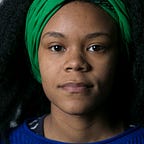Chicago Police Killings and the Toll on Young People
Text by Kristin Brown; Video by Monzell McKnight, Chelsea Barry, Patty Macias; Advised by Yana Kunichoff
The above video is a collaboration between City Bureau and Free Spirit Media. Below, Kristin Brown summarizes research from the video project.
In 2015, police killed nearly 1,000 American citizens; at least 564 of them were unarmed, according to the Washington Post. As part of a spring cycle reporting project, City Bureau journalists compiled a database documenting all 48 people killed by Chicago Police — the nation’s third-largest police force with its own longstanding history of police brutality — between 2012 and 2015. Although youth between the ages of 13 and 24 account for approximately 30 percent of Chicago’s population according to Census data, they make up 52 percent of people killed by Chicago police. All the victims were African American or Latino.
Most of these shootings were ruled justifiable homicides and/or the officer was cleared of any wrongdoing. According to the Independent Police Review Authority, the agency currently charged with investigating major allegations of police misconduct, a justifiable shooting is defined as “a killing without evil or criminal intent for which there can be no blame, such as self-defense to protect oneself or to protect another or the shooting by a law enforcement officer in fulfilling his/her duties.” Since IPRA’s inception in 2007, only two cases were proven to be unjustified.
When it comes to use of force, Chicago’s police directives state, “Members are not required to start at the lowest levels of the use of force model; they will select the appropriate level of force based on the subject’s actions.” A separate guideline says that officers will use the amount of force reasonable based on the circumstances, but that reasonableness is not capable of precise definition— rather, it’s judged by each individual officer in the moment. That subjectivity (also known as the split-second doctrine) was upheld in the Graham v. Connor 1989 Supreme Court case, which ruled that judgments involving law enforcement and excessive force may only take into account the split-second mindset of an officer, rather than the context of the entire situation, which would only be known in hindsight.
Students at Hyde Park Academy involved in the Youth/Police Project are aware of the stark statistics of young people involved in police shootings. They say they wonder why officers don’t instead shoot to disengage suspects instead of killing them. According to a 2014 article published in The Guardian, officers aren’t trained to wound suspects because it doesn’t make sense legally or tactically. Candace McCoy, a professor at City University of New York says, “If a police officer decides to fire, they will likely be doing so under intense pressure at a dangerous suspect who is likely moving quickly. They are trained to shoot center mass, roughly the chest region, because they’re more likely to hit the target and stop an imminent threat.”
As is well documented in neuroscience, teenagers tend to be more impulsive than adults because their brains are still developing. Neuroscientist Dr. Frances Jensen told the Huffington Post in 2015, “The brain is the last organ in the body to reach maturity and it continues to develop into the mid-20s.” As a result of this, young people are wired to be split-second decision makers, she said. Their decisions tend to be more emotional in nature. This may explain why oftentimes, their interactions with police turn deadly.
Based on the database created by City Bureau journalists, four of the police killing cases are still open. Officers in the other cases returned to regular duty. In an effort to reduce fatal police encounters, the Chicago Police department is expected to increase the number of officers equipped with Tasers in spring this year. But activists in Chicago, including Sarah Wild from Stop Police Crime, say there needs to be more widespread change within the system for police accountability to improve.
